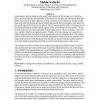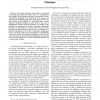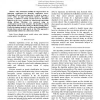265 search results - page 3 / 53 » Learning to Drive and Simulate Autonomous Mobile Robots |
AROBOTS
2008
13 years 7 months ago
2008
Autonomous mobile robots need to adapt their behavior to the terrain over which they drive, and to predict the traversability of the terrain so that they can effectively plan thei...
ICRA
2010
IEEE
13 years 6 months ago
2010
IEEE
— This paper addresses the problem of acquiring a hierarchically structured robotic skill in a nonstationary environment. This is achieved through a combination of learning primi...
FLAIRS
2006
13 years 9 months ago
2006
Autonomous robots, such as automatic vacuum cleaners, toy robot dogs, and autonomous vehicles for the military, are rapidly becoming a part of everyday life. As a result the need ...
ICRA
2005
IEEE
14 years 1 months ago
2005
IEEE
—Safe, autonomous mobility in rough terrain is an important requirement for planetary exploration rovers. Knowledge of local terrain properties is critical to ensure a rover’s ...
ISRR
2005
Springer
14 years 1 months ago
2005
Springer
NASA’s Mars Exploration Rovers (MER) have collected a great diversity of geological science results, thanks in large part to their surface mobility capabilities. The six wheel r...



